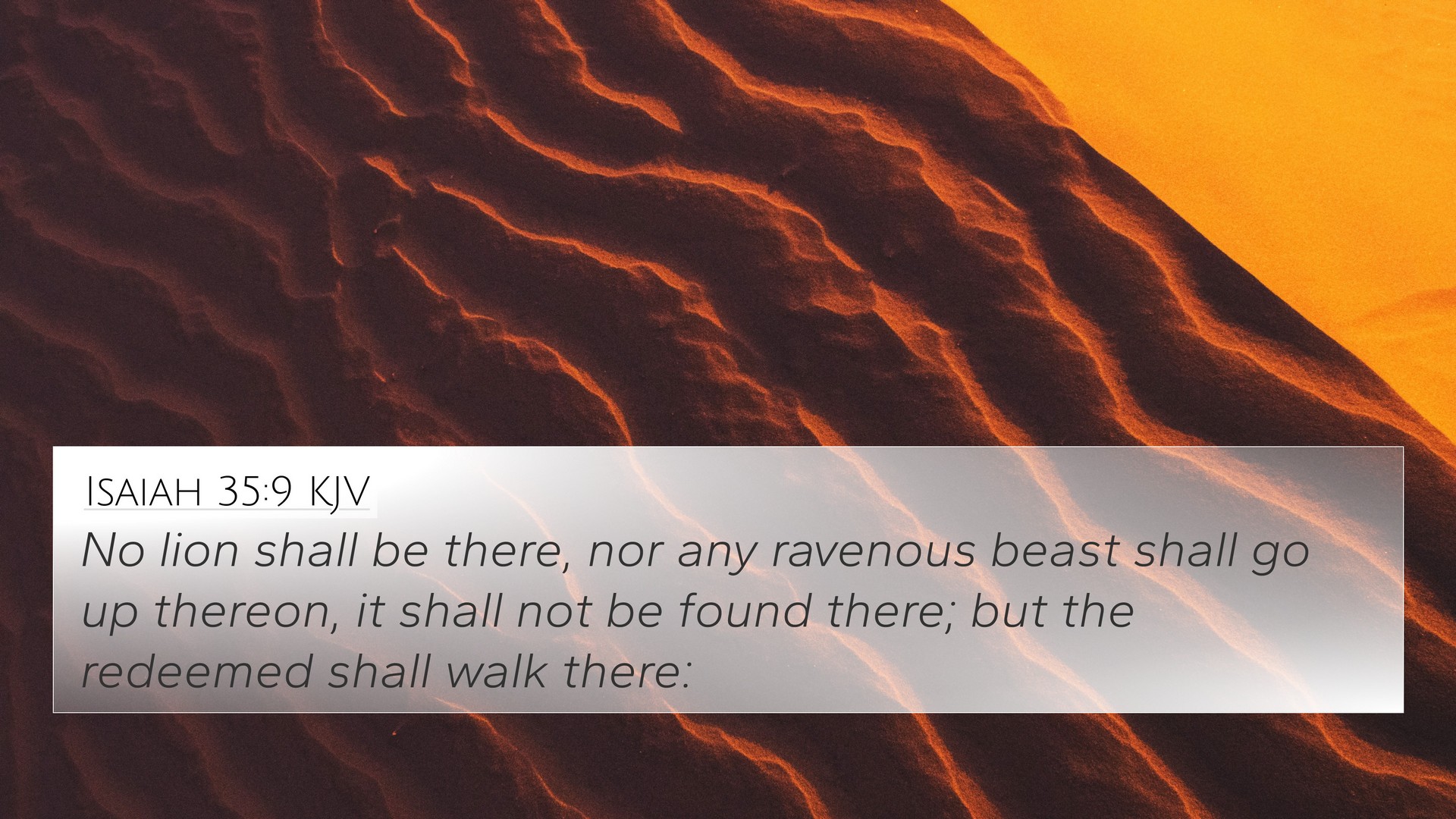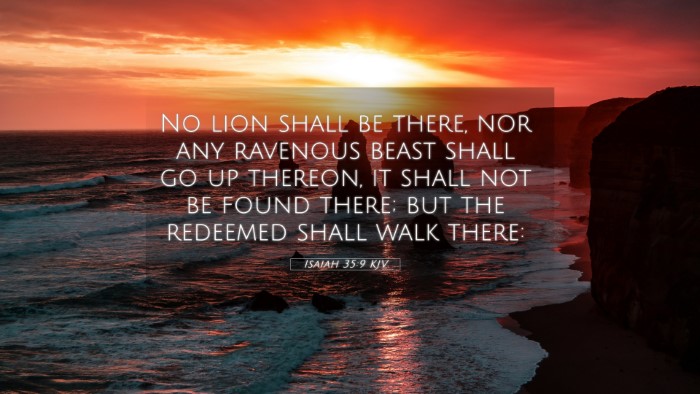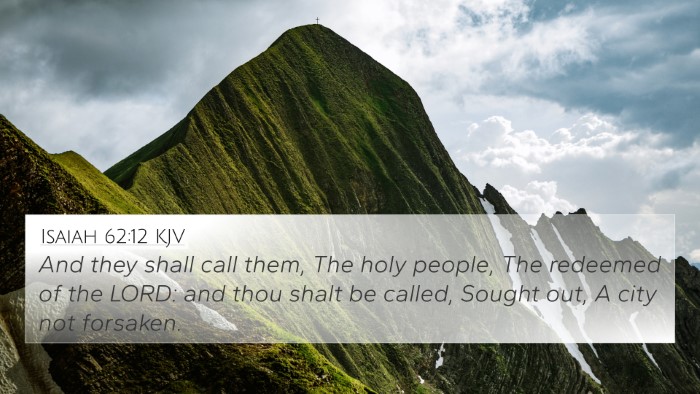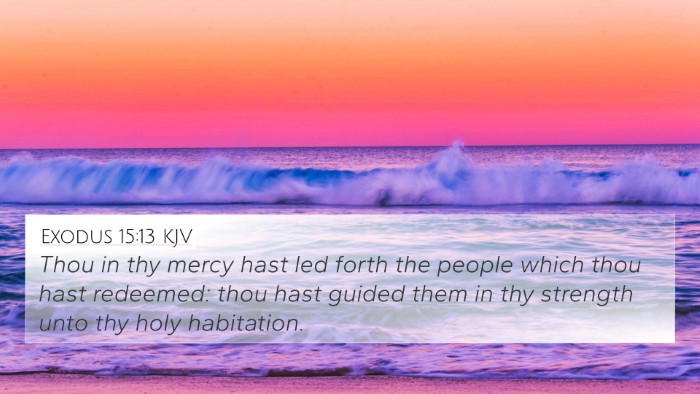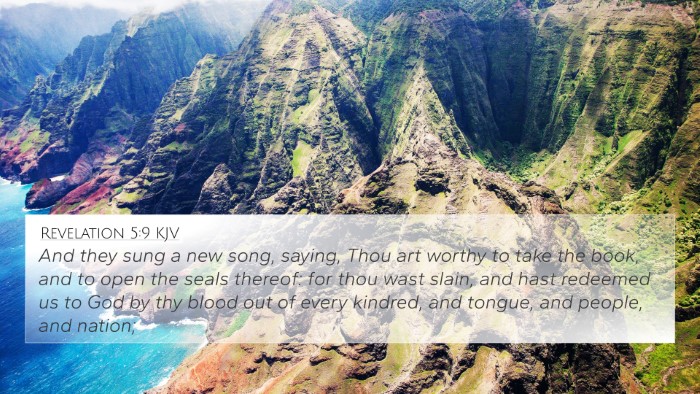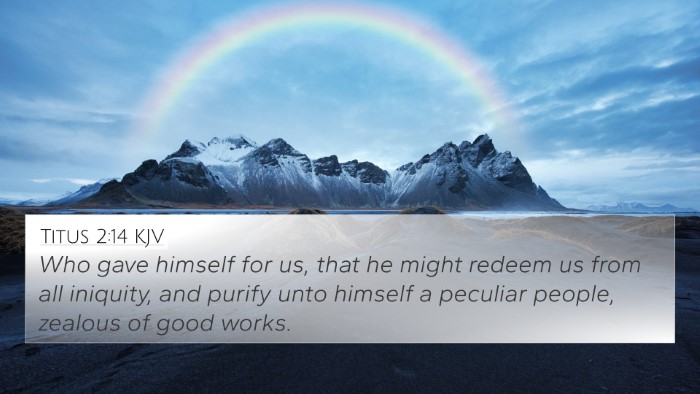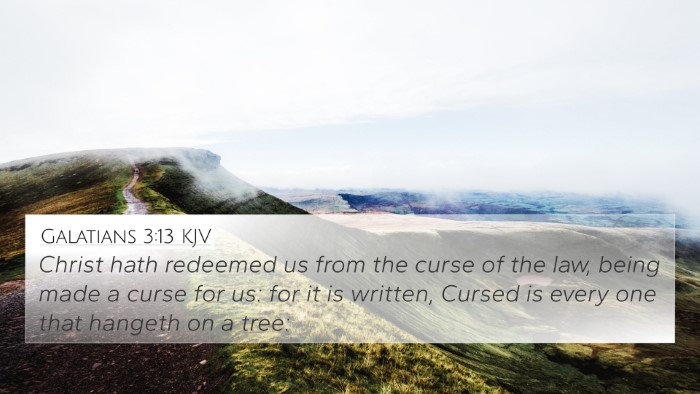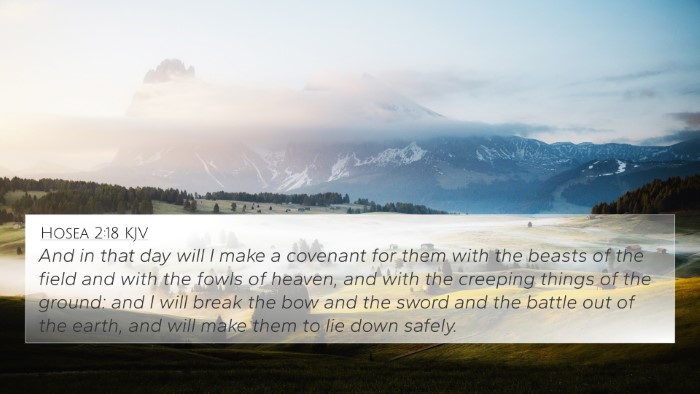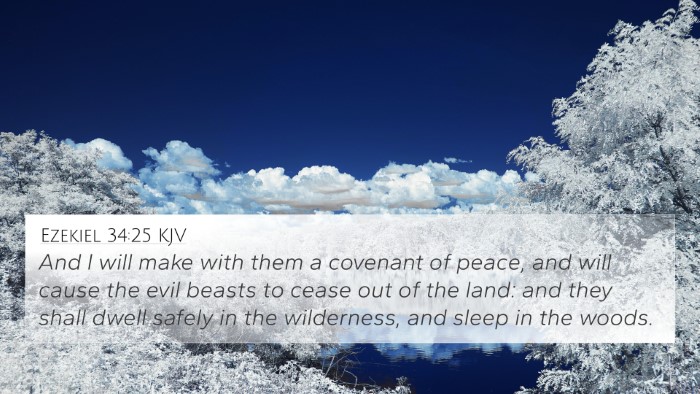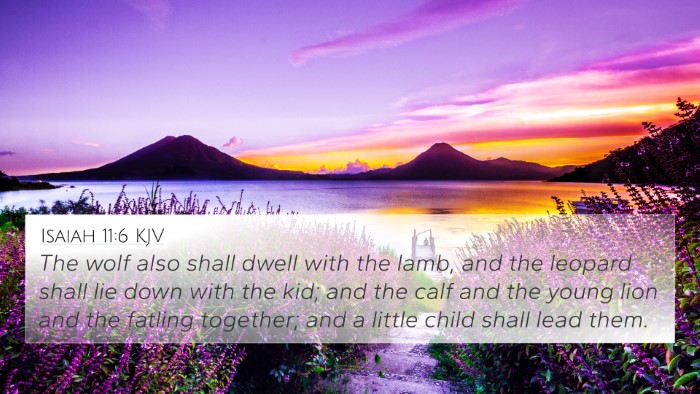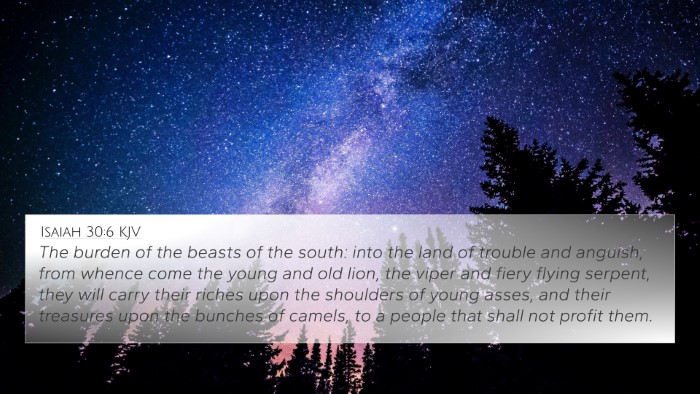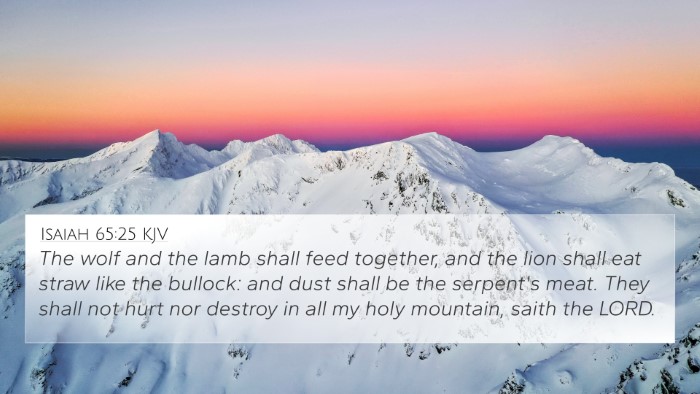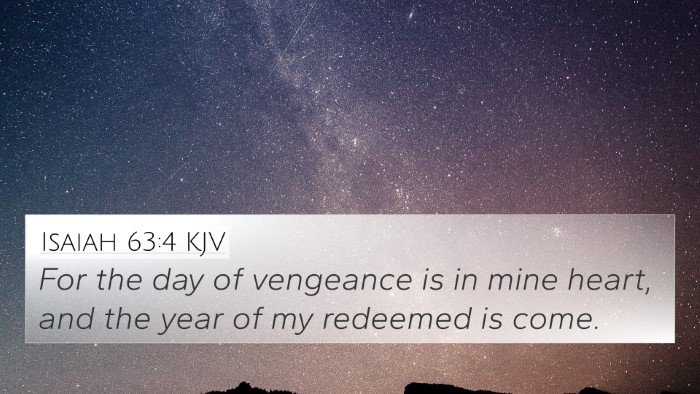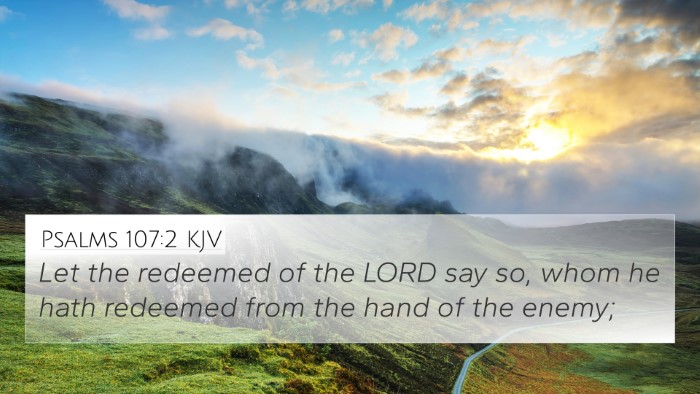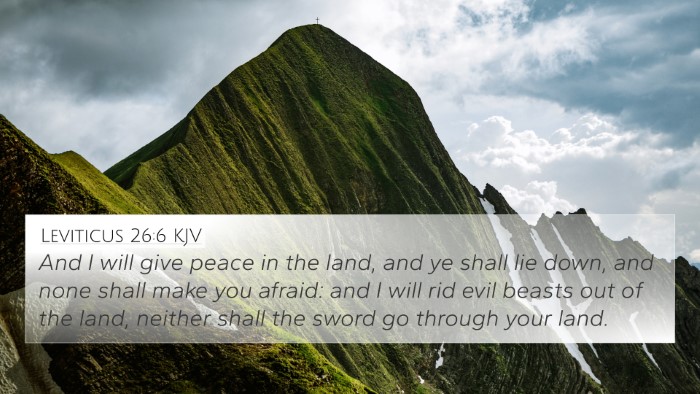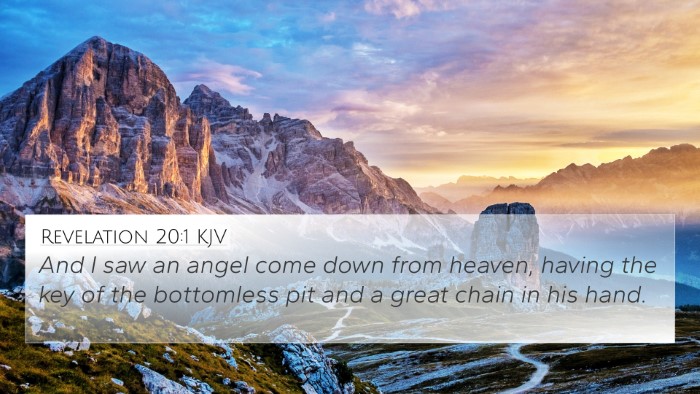Understanding Isaiah 35:9
Isaiah 35:9 reads: "No lion shall be there, nor any ravenous beast; it shall not be found there; but the redeemed shall walk there." This verse provides profound theological significance concerning the nature of God's kingdom and the promised restoration for His people. Below, we summarize insights from public domain commentaries including Matthew Henry, Albert Barnes, and Adam Clarke to deepen our understanding.
Contextual Overview
Isaiah 35 is often seen as a chapter depicting the restoration of Israel and the comfort that God's people will experience. It paints a vivid picture of joy, peace, and a return to a land free of danger and sin. The imagery of a safe and prosperous land invites comparisons to various biblical themes found throughout Scripture.
Key Insights from Commentaries
-
Matthew Henry:
Henry emphasizes that the absence of beasts such as lions symbolizes a time of peace and safety. In his analysis, he connects this notion to the New Testament, where God promises eternal peace in the kingdom of heaven.
-
Albert Barnes:
Barnes notes the significance of the "redeemed" as those who have been delivered from sin and danger. They represent the faithful who will partake in the joys of God’s kingdom. This verse serves as encouragement amidst trials, linking to other passages about salvation and hope.
-
Adam Clarke:
Clarke highlights the metaphorical implications of "lion" and "ravenous beast," asserting that these represent fears and evils that threaten the faithful. The presence of the redeemed walking signifies their victory over sin and death, resonating with the theme of redemption seen throughout the Scriptures.
Bible Verse Parallels
This verse stands in noticeable relationships with various other scriptures. Below are cross-references that help build connections and expose the depth of Biblical themes:
- Psalm 91:13: Advises that even lions and serpents will be trampled, reflecting God’s protection over the faithful.
- Isaiah 11:6: "The wolf shall dwell with the lamb," depicting peace in God’s creation.
- Revelation 21:4: Offers promises of a future without pain or sadness, paralleling the peace described in Isaiah 35:9.
- Micah 4:4: Discusses a time where people will sit under their vines and fig trees, echoing security in the land.
- Romans 8:21: Speaks of creation being set free from bondage, linking the concept of restoration.
- 2 Peter 3:13: Refers to a new heaven and earth, which ties to the promises of peace in Isaiah.
- John 10:9: Where Jesus describes Himself as the door, ensuring safety for His followers.
Thematic Connections
The themes in Isaiah 35:9 connect significantly to the overarching narrative of redemption present throughout the Bible.
-
Redemption: The idea of the "redeemed" points to God’s plan for His people, indicating a central theme in Scripture, where believers experience restoration through faith.
-
Safety and Peace: The absence of predatory beasts symbolizes God’s protective nature towards those who trust in Him, resonating through various interpretations of comfort found in the Psalms.
-
New Creation: The imagery parallels the New Testament's proclamations about the new heaven and earth that God will establish, fulfilling the promises made to His people.
Application and Reflection
As we delve into the implications of Isaiah 35:9 and its related scriptures, believers are called to reflect on themes of hope, safety, and the assurance of God’s promises. It serves as a reminder that amidst trials and fears, those who are redeemed can walk confidently in God’s promise of peace.
Conclusion
This exploration reveals the beauty of scriptural cross-referencing, illustrating how various Bible verses relate to each other and build a cohesive narrative of God’s love and redemption. Engaging with these themes through various scriptures strengthens our understanding and theological foundations.
Further Study Tools
For those interested in diving deeper into the connections within the Scriptures, consider using the following resources:
- Bible concordance
- Bible cross-reference guide
- Tools for Bible cross-referencing
- Cross-reference Bible study methods
- Bible reference resources
